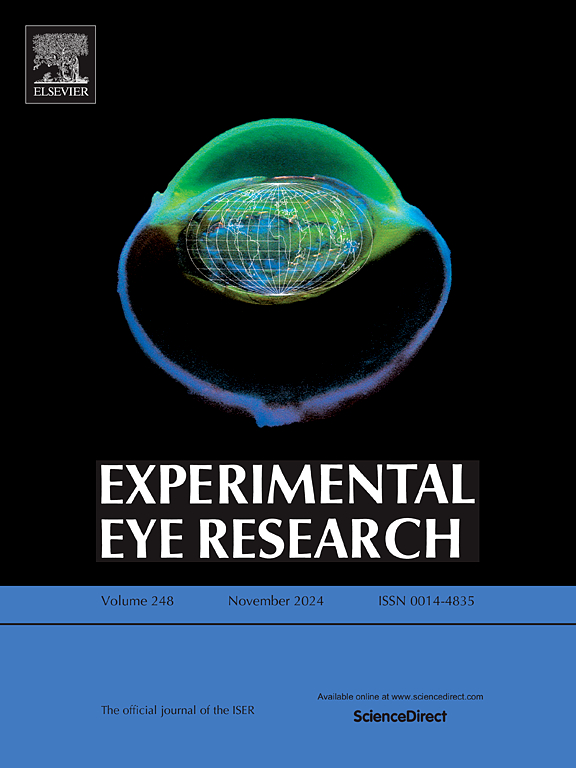Investigating prolactin-induced protein and its role in modulating the metabolic state of the keratoconus microenvironment
IF 3
2区 医学
Q1 OPHTHALMOLOGY
引用次数: 0
Abstract
Keratoconus (KC) is a progressive corneal disorder characterized by thinning and irregular astigmatism, leading to visual impairment. This study investigates the role of Prolactin-Induced Protein (PIP), a 17-kDa glycoprotein significantly downregulated in KC subjects, in modulating corneal cellular metabolism. Using human corneal fibroblasts from healthy (HCFs) and KC (HKCs) subjects, we assessed the effects of exogenous PIP (50–500 ng/mL) via targeted mass spectrometry and Seahorse bioenergetic analyses. Metabolomic profiling revealed that PIP significantly modulates various metabolites involved in multiple bioenergetic and oxidative stress related pathways including the Warburg effect and thiamine metabolism. Seahorse analysis revealed that when compared to HCFs, HKCs exhibit impaired ATP production from both oxidative phosphorylation and glycolysis. Notably, PIP treatment reversed this impairment and selectively enhanced mitochondrial function and glycolysis in HKCs without affecting HCFs. This study provides the first evidence of PIP's role in regulating energy metabolism in KC, suggesting its potential as a therapeutic target for addressing the metabolic dysfunction underlying KC pathogenesis.
研究催乳素诱导蛋白及其在圆锥角膜微环境代谢状态调节中的作用
圆锥角膜(KC)是一种进行性角膜疾病,其特征是变薄和不规则散光,导致视力损害。本研究探讨了催乳素诱导蛋白(Prolactin-Induced Protein, PIP)在角膜细胞代谢中的作用。催乳素诱导蛋白是一种17 kda的糖蛋白,在KC受试者中显著下调。使用健康(HCFs)和KC (HKCs)受试者的人角膜成纤维细胞,我们通过靶向质谱和海马生物能量分析评估了外源性PIP (50-500 ng/mL)的影响。代谢组学分析显示,PIP显著调节多种生物能量和氧化应激相关途径的代谢物,包括Warburg效应和硫胺素代谢。海马分析显示,与hcf相比,HKCs在氧化磷酸化和糖酵解过程中都表现出ATP产生受损。值得注意的是,PIP治疗逆转了这种损伤,并选择性地增强了HKCs的线粒体功能和糖酵解,而不影响hcf。这项研究首次证明了PIP在KC中调节能量代谢的作用,表明它有可能成为解决KC发病机制中代谢功能障碍的治疗靶点。
本文章由计算机程序翻译,如有差异,请以英文原文为准。
求助全文
约1分钟内获得全文
求助全文
来源期刊

Experimental eye research
医学-眼科学
CiteScore
6.80
自引率
5.90%
发文量
323
审稿时长
66 days
期刊介绍:
The primary goal of Experimental Eye Research is to publish original research papers on all aspects of experimental biology of the eye and ocular tissues that seek to define the mechanisms of normal function and/or disease. Studies of ocular tissues that encompass the disciplines of cell biology, developmental biology, genetics, molecular biology, physiology, biochemistry, biophysics, immunology or microbiology are most welcomed. Manuscripts that are purely clinical or in a surgical area of ophthalmology are not appropriate for submission to Experimental Eye Research and if received will be returned without review.
 求助内容:
求助内容: 应助结果提醒方式:
应助结果提醒方式:


